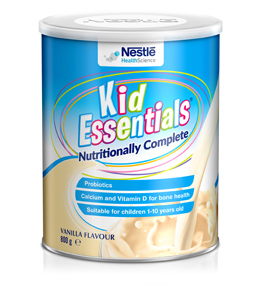Faltering growth can affect growth and development
Faltering growth is recognized as children who have a slower than expected rate of growth along an infant’s previously defined growth curve1. It is identified from interpretation of growth charts (weight, height and head circumference) by an appropriate healthcare professional.
Growth in the initial years of life can be very rapid, however in some cases, infants aren’t able to meet the expected growth standards. Many infants will eventually catch up naturally and reach their normal growth potential, but those that don’t are considered as having faltering growth. Undernutrition is recognized as the primary cause of poor weight gain in infancy2.
Faltering growth is a common problem, accounting for 2-25% of paediatric hospital admissions with many other children managed in the community3.
Faltering growth during childhood can be caused by a variety of different diseases or conditions that can result in undernutrition due to2:
- Inability to digest or absorb nutrients
- Excessive loss of nutrients
- Increased nutrient requirements due to underlying disease
- Inability to fully utilize nutrients
- Reduced intake of nutrients
Underlying medical conditions that result in undernutrition account for approximately 5% of cases of faltering growth, with the majority caused by chronic feeding problems or social and emotional problems. Excessive consumption of fluid such as milk and juice can contribute to the problem2.
Nutrition in the early years of life is a major determinant of growth and development and it influences future adult health2. Managing the undernutrition in faltering weight is as important as treating the underlying problem itself, as delivering the appropriate levels of nutrients as early as possible can lead to better physical and mental development. Energy requirements for growth in young children is high, therefore when catch up growth is needed, nutritional requirements are even higher and can be challenging to achieve. In children, oral nutritional supplements or enteral feeding may be required.
At Nestlé Health Science, we are committed to providing infants and children who have faltering growth with tailor-made nutritional therapies to help them meet their nutritional requirements in order to grow and develop and maximize their future adult health.
1. McDonald EL, Bailie RS, Rumbold AR, Morris PS, & Paterson BA. Preventing growth faltering among Australian Indigenous children: implications for policy and practice. Med J Aust. 2008;188(8):S84-S6.
2. Shaw, V. 2015. Clinical Paediatric Dietetics 4th Edition. West Sussex. John Wiley & Sons, Ltd
Shields, B. Wacogne, I. Wright, C.M. 2012. Weight faltering and failure to thrive in infancy and early childhood. British Medical Journal, 345, e5931




